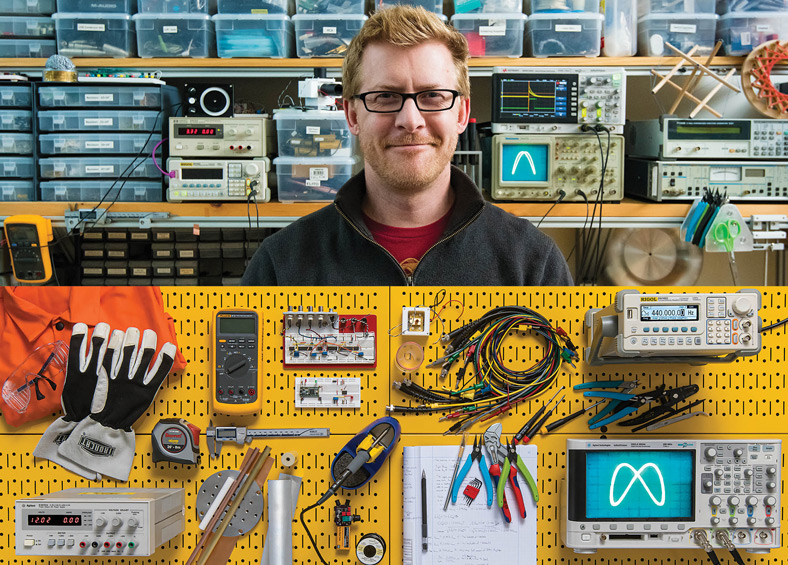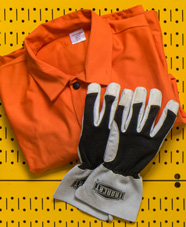
Since I came to AU 10 years ago, the types of scientific problems that we’re tackling have gotten more complicated and ambitious. I use the electronics and machine shops to design and build experiments for faculty, staff, and students across the arts and sciences.
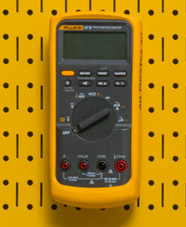
A digital multimeter measures the components used in electronic circuitry.
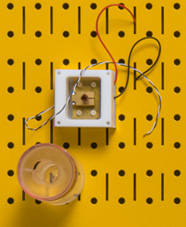
I recently used a mill and lathe to make a cell heater out of Teflon, aluminum, brass, and glass for a quantum optics experiment. I’m mostly a self-taught machinist; YouTube is a great resource.
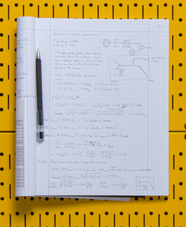
It is easier to write proofs and draw schematics in a notebook than on a computer.
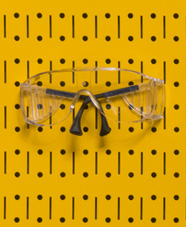
Some lab equipment can cause serious injury or death. High voltage sources and compressed gases are particularly dangerous.
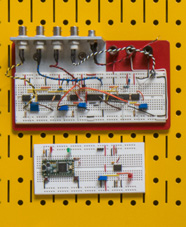
I have been building prototype circuits since I was 13, and I use breadboards to make sure that they work before I commit them to a printed circuit board.
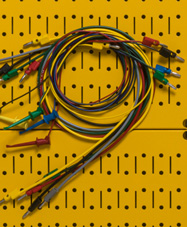
Hundreds of cables connect and power everything in the lab.
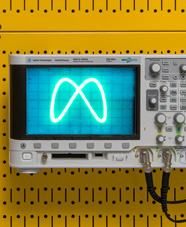
Oscilloscopes allow me to investigate properties of nature like light, sound, pressure, and temperature. They display these properties in time and can capture signals that are billionths of a second in duration.
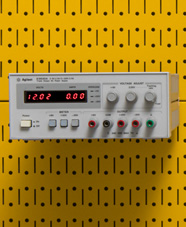
Power supplies provide voltages and currents that allow my circuits to operate.
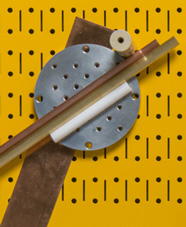
I consider properties like thermal and electrical conductivity, coefficient of friction, and heat capacity when choosing materials for a project.
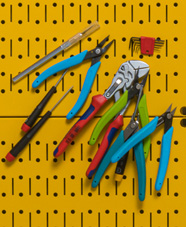
Physicists solve problems with their minds and their hands.
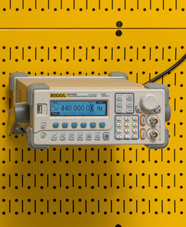
Function generators create waveforms used as stimuli for electronic experiments.
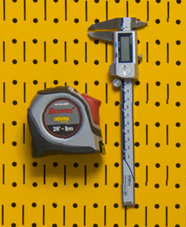
Calipers are the easiest thing to grab to take dimensional measurements. We still use inches in the machining world, so we have tape measures with both imperial and metric units.
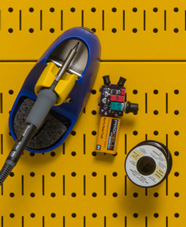
Soldering irons melt solder to join the components together permanently.
